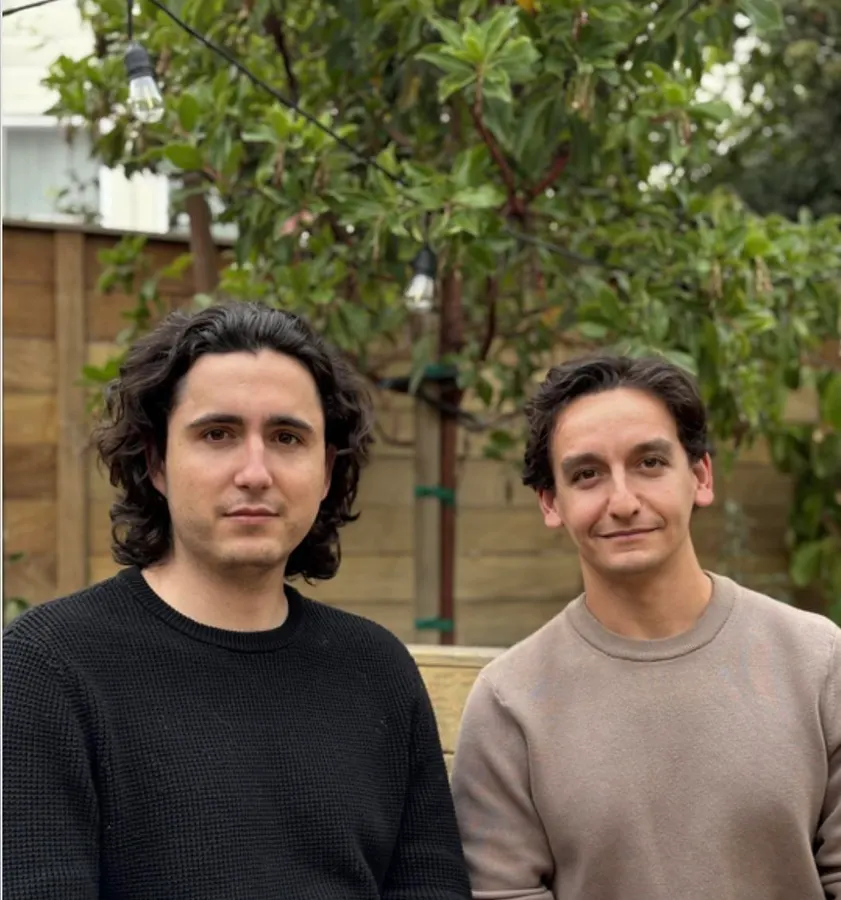By Forbes Staff,Rashi Shrivastava
Copyright forbes

Manifest AI cofounders Carles Gelada (left) and Jacob Buckman (right) met at Google Brain.
Manifest AI
Former OpenAI and Google Brain researchers Jacob Buckman and Carles Gelada are fed up with the “dirty secret” in the field of artificial intelligence— it’s humans that are making choices about what information AI models need to answer questions, not machines. Models need to process hundreds of thousands of words or tokens (what’s called “context length”) to generate better responses. The greater the context length, the more accurate the model. But greater length can slow models down; it’s also more costly. So some frontier lab researchers have taken to trimming things down themselves.
“They say, ‘We’re going to throw out everything in my memory that’s very old. For instance, they’ll cut off everything beyond 200,000 tokens.’ But it should not be the human deciding what goes in it and what goes out of it,” Gelada explained. “The neural networks are good at learning and should make that decision with the algorithm.”
To fix this problem, the two researchers, who met at Google Brain, founded Manifest AI, a New York City-based independent research lab, in 2023. The pair realized that in order to wrangle the context length problem, they had to move beyond transformers–the software architecture that underlies ChatGPT, Copilot and Gemini–and develop a new AI paradigm entirely, which they call “power retention.” This approach lets AI models make their own decisions about what information to delete from their memory to focus on the stuff that matters the most. Gelada claims this new architecture can help train and run AI models faster and more cost efficiently. “Power retention is going to be a complete game changer,” Buckman said. The research lab is also releasing an open source coding model that can process and generate longer pieces of code.
Manifest AI is still tiny compared to larger AI labs, having raised just $5.5 million in VC funding. But its founders are hoping the next technical breakthrough in AI is made at a small company like theirs.“At large tech companies “there’s this pressure on focusing on marginal improvements instead of making radical changes,” said Gelada. ”It really limits the scope of the type of ideas you’re willing to engage and explore.”
Let’s get into the headlines.
TALENT RESHUFFLE
President Donald Trump imposed a $100,000 annual fee on new H1-B visa applications, which companies like Google, Amazon and Apple have relied on for years to recruit skilled and talented employees from outside the U.S. The move, part of the Trump administration’s larger crackdown on immigration, could stifle American AI companies’ ability to access top talent, especially those who cannot afford to pay the exorbitant fees that bigger tech companies can absorb. Y Combinator CEO Garry Tan said the fee “kneecaps startups” and companies that provide IT workers on a contractual basis, amid the AI race. It may also prevent future tech giants from ever getting off the ground, as many companies, such as Zoom and Snowflake, were founded by immigrants who first came to the country on H1-B visas.
HUMANS OF AI
Surge AI CEO Edwin Chen has quietly built an enormous data labelling business that booked $1.2 billion in revenue last year from customers like Meta, Anthropic and Google and became profitable without raising a dime of VC funding. For years, he’s kept a low profile – but not anymore. In an exclusive interview with Forbes, the eccentric entrepreneur dished on a buffet of topics— from how humans would communicate with aliens if they came to Earth, how VC-backed Valley startups are a “get-rich-quick scheme” and his midnight strolls in Times Square. With approximately 75% stake in the company, the math nerd is worth about $18 billion.
Chip giant Nvidia plans to invest $100 billion in OpenAI to help the ChatGPT creator build the large-scale infrastructure needed to power its AI models, it announced on Monday. OpenAI plans to use at least 10 gigawatts worth of Nvidia’s GPUs and data centers in the coming years, per the deal. Nvidia CEO Jensen Huang touted the deal as the “biggest AI infrastructure project in history” while OpenAI’s CEO Sam Altman said, “Everything starts with compute.” Billions have already been plowed into the construction of these rectangular lego-like facilities, even as Wall Street has started to raise concerns about an AI bubble.
AI DEALS OF THE WEEK
Nvidia has been investing in several “neoclouds”— companies like CoreWeave that are building massive data centers for its GPUs. The chip giant recently invested $500 million in a tiny London-based startup Nscale to help support its larger goal of bringing 300,000 GPUs online for customers like OpenAI and Microsoft, Forbes reported.
Also notable: Elon Musk’s xAI is reportedly raising $10 billion at a $200 billion valuation, CNBC reported.
It was a sunny day in August 2017, and CoreWeave CEO Michael Intrator was beginning to think he might actually set his Manhattan office tower on fire.
Dozens of powerful Nvidia GPUs were plugged into every available outlet, churning through the convoluted math required to mine cryptocurrency, and they were throwing off a ton of heat. With the air conditioning turned off for the weekend, the sixth-floor Financial District office had turned into a 130-degree hotbox. “I flipped. This wasn’t really built for this,” Intrator says. “I was just like, ‘We’ve got to go. We’ve got to go.’ ”
He and his cofounders, Brian Venturo and Brannin McBee, scrambled, frantically disconnecting servers that were almost too hot to touch and loading them into a pickup truck before heading to New Jersey, where a garage properly ventilated with a gigantic exhaust fan waited to cool them.
Nearly a decade later, some things haven’t changed. Intrator is still running GPUs, but on an exponentially larger scale. Now he’s got some 250,000 of them warehoused across the 33 data centers that CoreWeave operates, renting out access to their number-crunching prowess to compute-hungry customers. Once popular for rendering graphics for video games and mining crypto, GPUs (graphics processing units), commonly designed by chip giant Nvidia, have become a crucial engine for artificial intelligence. Access to them can determine a company’s fortunes, and CoreWeave, which trades on the Nasdaq, has built a $50 billion (market cap) business by becoming one of their go-to brokers, serving the likes of Microsoft, OpenAI and Meta in the race for AI ascendency.
There is still the risk of fire—at least in a monetary sense. After pioneering a new kind of financing that helped CoreWeave borrow $29 billion, largely in loans backed by its GPUs, Intrator now balances shareholders’ qualms about deepening debt and widespread fears about an AI bubble with his broader ambition: to provide compute not just to the tech giants but to every company integrating AI into its operations.
Read the full story on Forbes.
MODEL BEHAVIOR
Elon Musk’s $1 trillion pay package hinges on whether he is able to get 1 million Tesla robotaxis on the road and 10 million active full self-driving users in the next ten years. But a recent test conducted by Forbes found major shortcomings in Tesla’s latest full self-driving system: it ignored traffic signs and speed limits and didn’t stop at a flashing pedestrian sign, squashing a child-sized mannequin called “Timmy.”
Got a tip? Share confidential information with Forbes.
Editorial StandardsReprints & Permissions



